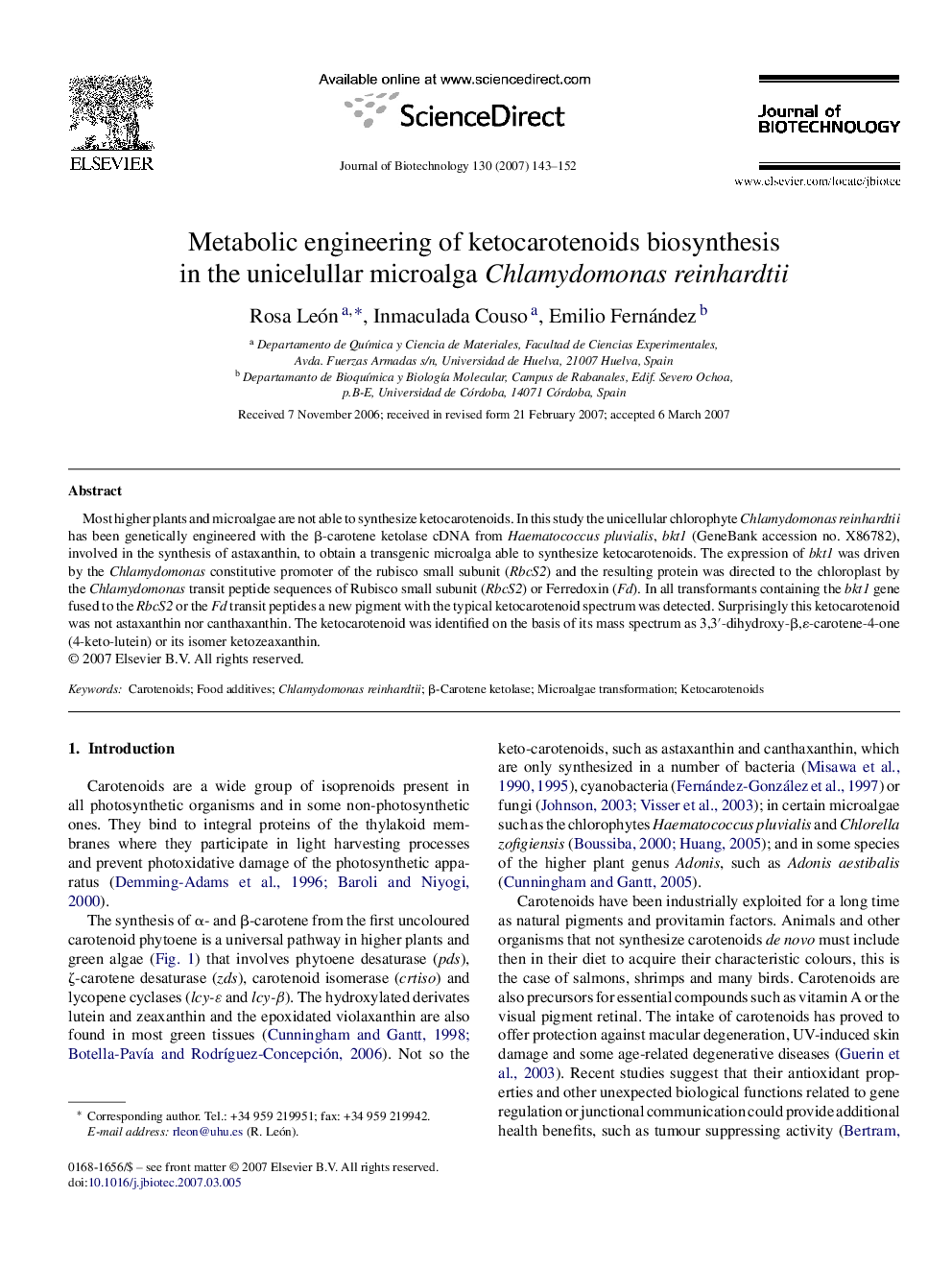| Article ID | Journal | Published Year | Pages | File Type |
|---|---|---|---|---|
| 25304 | Journal of Biotechnology | 2007 | 10 Pages |
Most higher plants and microalgae are not able to synthesize ketocarotenoids. In this study the unicellular chlorophyte Chlamydomonas reinhardtii has been genetically engineered with the β-carotene ketolase cDNA from Haematococcus pluvialis, bkt1 (GeneBank accession no. X86782), involved in the synthesis of astaxanthin, to obtain a transgenic microalga able to synthesize ketocarotenoids. The expression of bkt1 was driven by the Chlamydomonas constitutive promoter of the rubisco small subunit (RbcS2) and the resulting protein was directed to the chloroplast by the Chlamydomonas transit peptide sequences of Rubisco small subunit (RbcS2) or Ferredoxin (Fd). In all transformants containing the bkt1 gene fused to the RbcS2 or the Fd transit peptides a new pigment with the typical ketocarotenoid spectrum was detected. Surprisingly this ketocarotenoid was not astaxanthin nor canthaxanthin. The ketocarotenoid was identified on the basis of its mass spectrum as 3,3′-dihydroxy-β,ɛ-carotene-4-one (4-keto-lutein) or its isomer ketozeaxanthin.
